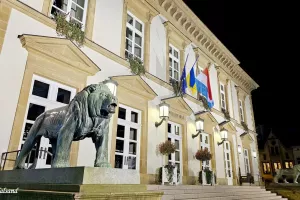This is a collection of pictures from Luxembourg. It is the result of a single trip to the small country in Northern Europe.
If you look into this link to Luxembourg, you will find this article, in time a travelogue with the content of the visit to the country and an article from a World Heritage Site. For now, please settle with this collection of about 60 pictures from Luxembourg.
This album contains images from a single visit to Luxembourg.
This gallery contains images from the capital city of Luxembourg, some from the chateau of Vianden, and also some shots taken out of a moving train or bus elsewhere.
59 Photos
Fast facts
Learn about the country on Wikipedia. Here is a moderated excerpt:
The basics
Luxembourg, officially the Grand Duchy of Luxembourg, is a small landlocked country in Western Europe. It borders Belgium to the west and north, Germany to the east, and France to the south. Its capital and most populous city, Luxembourg, is one of the four institutional seats of the European Union (together with Brussels, Frankfurt, and Strasbourg) and the seat of several EU institutions, notably the Court of Justice of the European Union, the highest judicial authority.
Luxembourg’s culture, people, and languages are highly intertwined with its French and German neighbours. Luxembourgish is the only national language of the Luxembourgish people and of the Grand Duchy of Luxembourg, however French is the only language for legislation. All three – Luxembourgish, German and French – are used for administrative matters in the country.
With an area of 2,586 square kilometers, Luxembourg is Europe’s seventh-smallest country. Its population of 672,050, makes it one of the least-populated countries in Europe. Foreigners account for nearly half the population. Luxembourg is a representative democracy. The constitutional monarch, Grand Duke Henri, makes it the world’s only remaining sovereign grand duchy.
History
The history of Luxembourg began in the year 963. That year Count Siegfried acquired a rocky promontory and its Roman-era fortifications. They called it Lucilinburhuc, “little castle”, and included the surrounding area. Siegfried’s descendants increased their territory through marriage, conquest, and vassalage. By the end of the 13th century, the counts of Luxembourg reigned over a considerable territory. In 1308, Count of Luxembourg Henry VII became King of the Romans and later Holy Roman Emperor. The House of Luxembourg would produce four Holy Roman Emperors during the High Middle Ages. In 1354, Charles IV elevated the county to the Duchy of Luxembourg. The duchy eventually became part of the Burgundian Circle and then one of the Seventeen Provinces of the Habsburg Netherlands.
The City and Fortress of Luxembourg was of great strategic importance due to its location between the Kingdom of France and the Habsburg territories. Gradually it became one of the most reputed fortifications in Europe. Later on, Luxembourg became part of the First French Republic and Empire under Napoleon.
The present-day state of Luxembourg first emerged at the Congress of Vienna in 1815. The Grand Duchy, with its powerful fortress, became an independent state under the personal possession of William I of the Netherlands with a Prussian garrison to guard the city against another invasion from France. In 1839, following the turmoil of the Belgian Revolution, the purely French-speaking part of Luxembourg became part of Belgium and the Luxembourgish-speaking part (except the Arelerland, the area around Arlon) became what is the present state of Luxembourg.
That’s it. Now, return to the Wikipedia link provided above, or to the gallery of pictures from Luxembourg.


